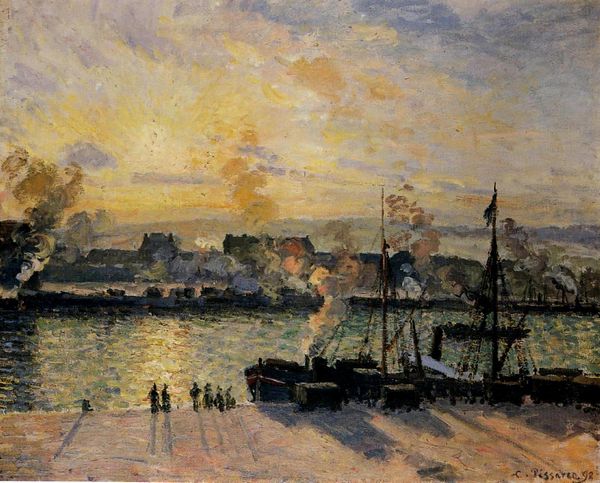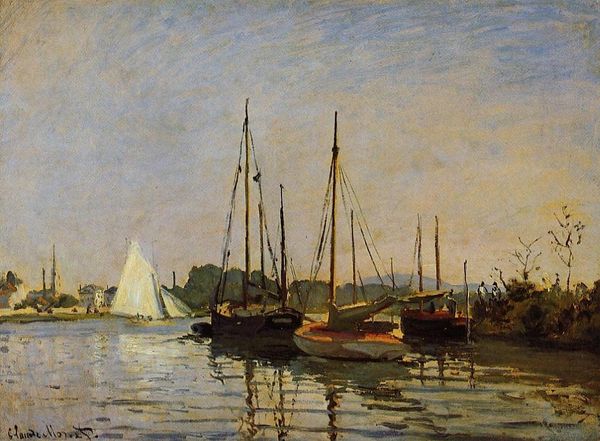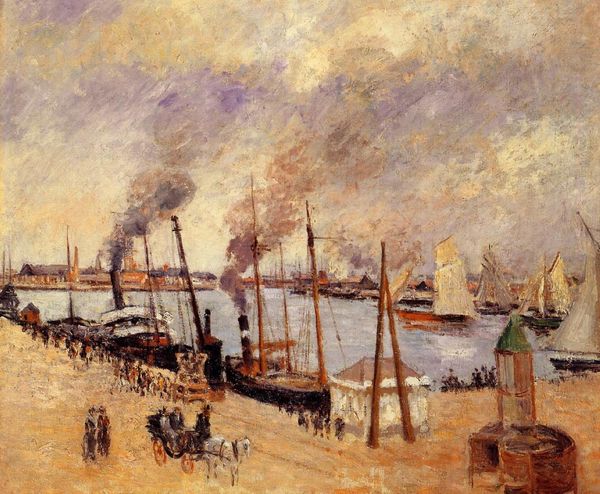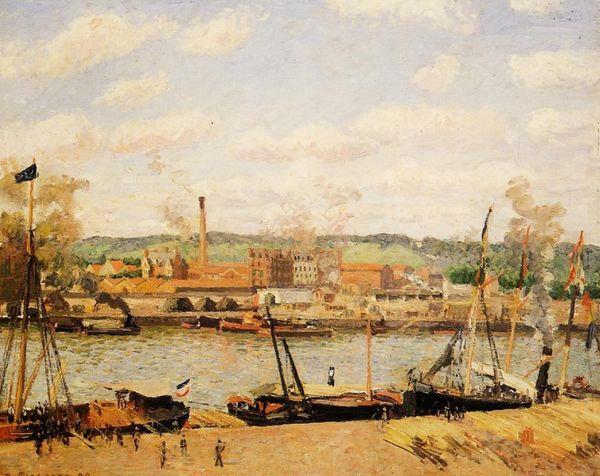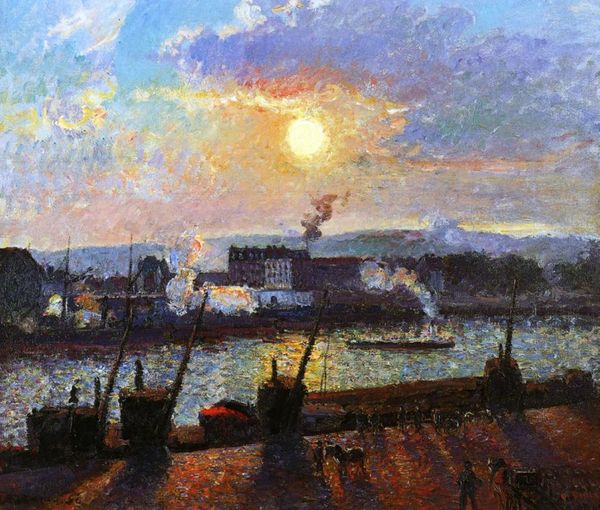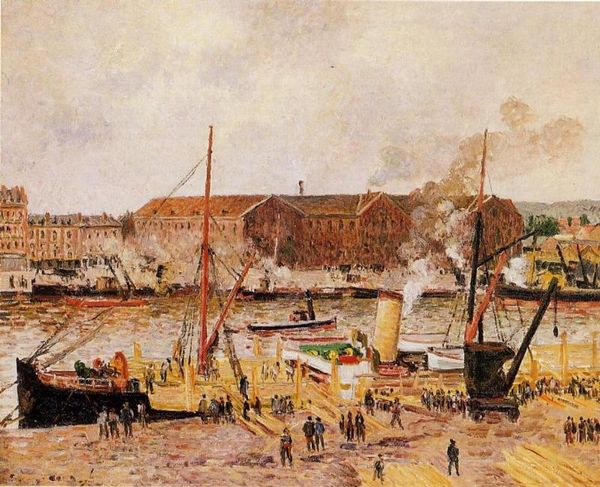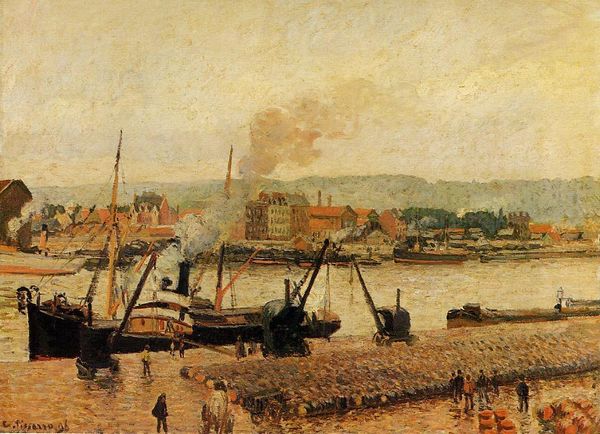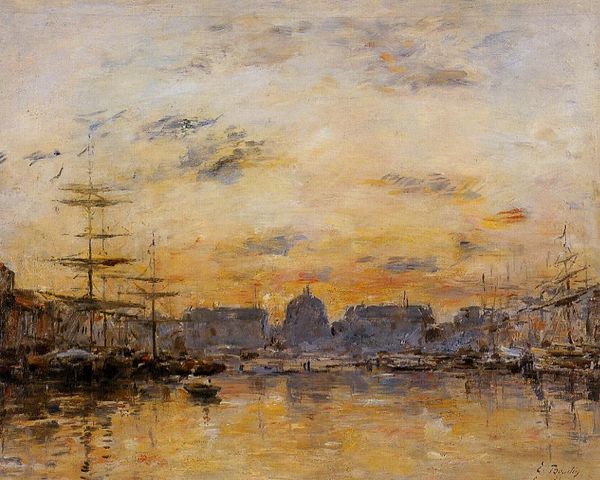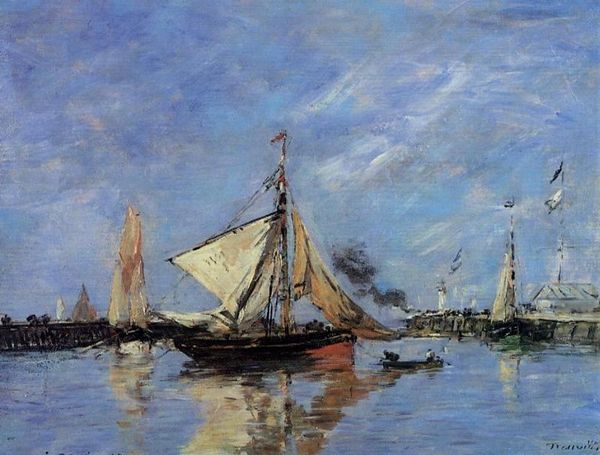
Dimensions: 45 x 55 cm
Copyright: Public domain
Editor: This is Camille Pissarro’s “Quay in Rouen Sunset,” painted in 1896 using oil paints. I’m struck by how the golden light transforms the industrial port into something almost dreamlike. How do you interpret this work, considering its place in art history? Curator: Well, let’s think about what Pissarro, as a Post-Impressionist, was responding to. Impressionism had already challenged academic painting, but Pissarro, along with others like Seurat and Cézanne, wanted to push further. He painted several views of Rouen. What does it say about Pissarro as an artist, do you think, to select an industrial setting like this quay as his subject matter? Editor: It seems like he's elevating the everyday, finding beauty in a working port rather than an idealized landscape. Was this a common theme in the late 19th century? Curator: Precisely! The late 19th century was a time of massive industrial expansion and urbanization. Artists were grappling with these changes, questioning what was worthy of being depicted. This quay, with its bustling activity and the visual drama of the steam and the light, represents the modern experience. Pissarro wasn't just painting what he saw, but participating in a dialogue about the changing world and how art should reflect it. Look at how the light reflects on the water – is it a natural depiction, or does it symbolize change? Editor: That makes sense. So, it's not just a pretty picture, it’s a commentary on industrial society. I hadn't thought about the socio-political context so deeply. Curator: Exactly. By choosing this subject and depicting it with such sensitivity, Pissarro is acknowledging the social and economic realities of his time, while still seeking beauty within it. It’s a radical act, in a way. Do you think he's glorifying industry or just observing? Editor: Perhaps he is just an observer, documenting and allowing the viewers to form their own opinions. I appreciate seeing this painting in a new light! Curator: It's fascinating how understanding the historical context can deepen our appreciation of a piece of art. I found our chat valuable, I was making assumptions about the work, without taking the setting of the painting into consideration.
Comments
No comments
Be the first to comment and join the conversation on the ultimate creative platform.
